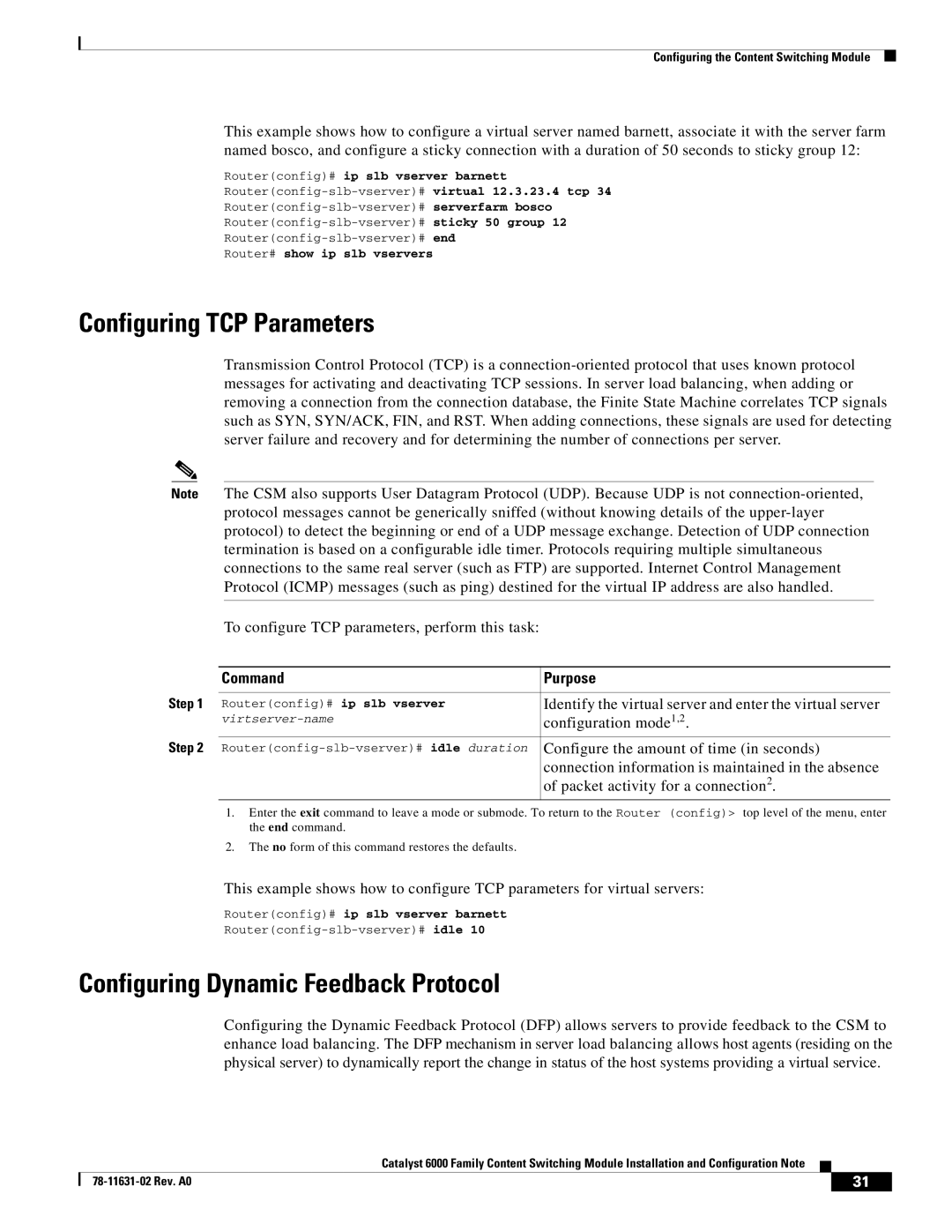
Configuring the Content Switching Module
This example shows how to configure a virtual server named barnett, associate it with the server farm named bosco, and configure a sticky connection with a duration of 50 seconds to sticky group 12:
Router(config)# ip slb vserver barnett
Router# show ip slb vservers
Configuring TCP Parameters
Transmission Control Protocol (TCP) is a
Note |
| The CSM also supports User Datagram Protocol (UDP). Because UDP is not | ||
|
| protocol messages cannot be generically sniffed (without knowing details of the | ||
|
| protocol) to detect the beginning or end of a UDP message exchange. Detection of UDP connection | ||
|
| termination is based on a configurable idle timer. Protocols requiring multiple simultaneous | ||
|
| connections to the same real server (such as FTP) are supported. Internet Control Management | ||
|
| Protocol (ICMP) messages (such as ping) destined for the virtual IP address are also handled. | ||
|
|
|
|
|
|
| To configure TCP parameters, perform this task: |
|
|
|
|
| ||
| Command | Purpose | ||
Step 1 |
|
| ||
Router(config)# ip slb vserver | Identify the virtual server and enter the virtual server | |||
| configuration mode1,2. | |||
Step 2 | Configure the amount of time (in seconds) | |||
|
|
| connection information is maintained in the absence | |
|
|
| of packet activity for a connection2. | |
1.Enter the exit command to leave a mode or submode. To return to the Router (config)> top level of the menu, enter the end command.
2.The no form of this command restores the defaults.
This example shows how to configure TCP parameters for virtual servers:
Router(config)# ip slb vserver barnett
Configuring Dynamic Feedback Protocol
Configuring the Dynamic Feedback Protocol (DFP) allows servers to provide feedback to the CSM to enhance load balancing. The DFP mechanism in server load balancing allows host agents (residing on the physical server) to dynamically report the change in status of the host systems providing a virtual service.
|
| Catalyst 6000 Family Content Switching Module Installation and Configuration Note |
|
|
|
|
|
| |||
|
|
| 31 |
| |
|
|
|
|
